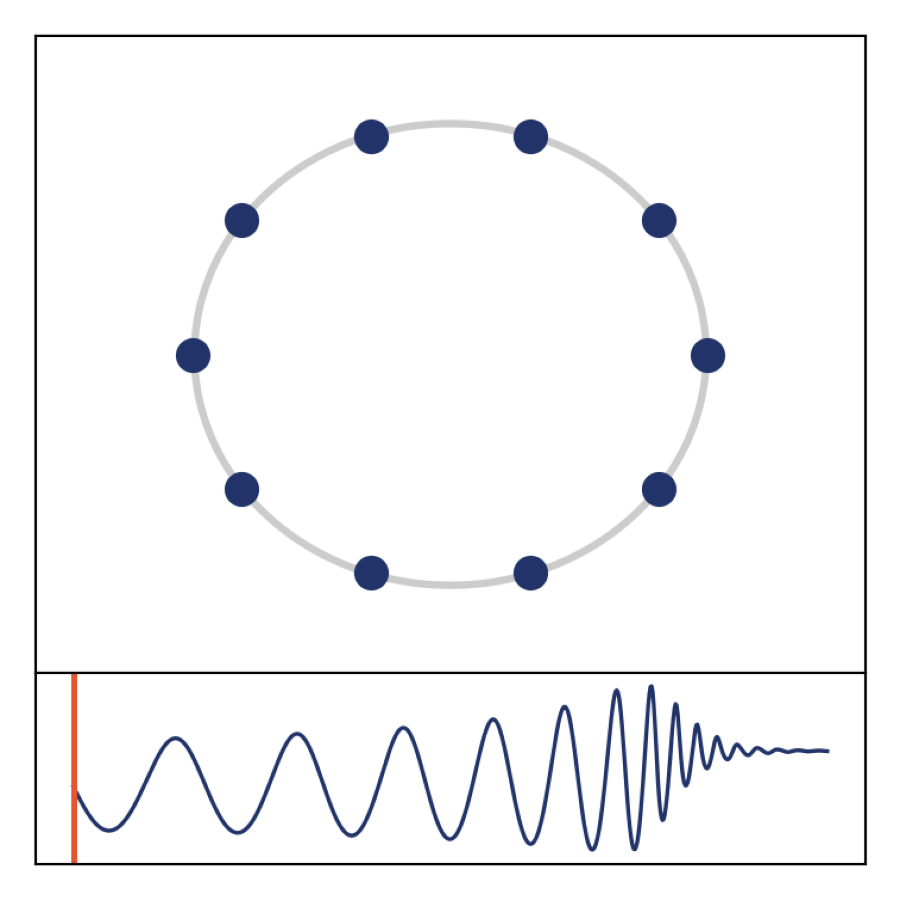Gravitational Memory
"there is no such thing as memory of the present while present, for the present is object only of perception, and the future, of expectation, but the object of memory is the past"
- Aristotle, On Memory and Reminiscence.
When we dive into a swimming pool, many are familiar with waves being created, visibly moving across the water's surface, perhaps reflecting from the concrete edges, and then fading away until the water returns to its original, flat configuration. With gravitational waves, though, the story is a bit unique. While our swimming pools may return to its same shape, spacetime does not. Instead, once a gravitational wave passes between two freely-falling observers the spacetime between them will be permanently changed due to what we call a memory effect.
Formally, memory effects are even stranger. As many learn in their introductory physics classes, symmetries of spacetime correspond to conserved charges, e.g., translation symmetry implies that momentum is conserved. Because of this, we may construct corresponding flux-balance laws for each transformation. For example, for translations/momentum we can assert that the change in a system's momentum is equal to the energy flux into that system.
For flat spacetime, the symmetry group is the Poincarè group: translations, rotations, and boosts. Thus, we have ten corresponding flux-balance laws. When one considers the symmetry group of asymptotic spacetime, i.e., the symemtries at the "edge of the universe", one does not encounter the Poincarè group. Instead, one arrives upon the infinite dimensional BMS group, which consists of extensions of the Poincarè transformation: supertranslations, superrotations, and superboosts. Like the Poincarè group, the BMS group also has corresponding conserved charges. But, instead of the change in these charges equaling a "hard" flux into the system, we now have that these two observables differ by a "soft" flux, which constitutes the induced memory.
Formally, memory effects are even stranger. As many learn in their introductory physics classes, symmetries of spacetime correspond to conserved charges, e.g., translation symmetry implies that momentum is conserved. Because of this, we may construct corresponding flux-balance laws for each transformation. For example, for translations/momentum we can assert that the change in a system's momentum is equal to the energy flux into that system.
For flat spacetime, the symmetry group is the Poincarè group: translations, rotations, and boosts. Thus, we have ten corresponding flux-balance laws. When one considers the symmetry group of asymptotic spacetime, i.e., the symemtries at the "edge of the universe", one does not encounter the Poincarè group. Instead, one arrives upon the infinite dimensional BMS group, which consists of extensions of the Poincarè transformation: supertranslations, superrotations, and superboosts. Like the Poincarè group, the BMS group also has corresponding conserved charges. But, instead of the change in these charges equaling a "hard" flux into the system, we now have that these two observables differ by a "soft" flux, which constitutes the induced memory.
